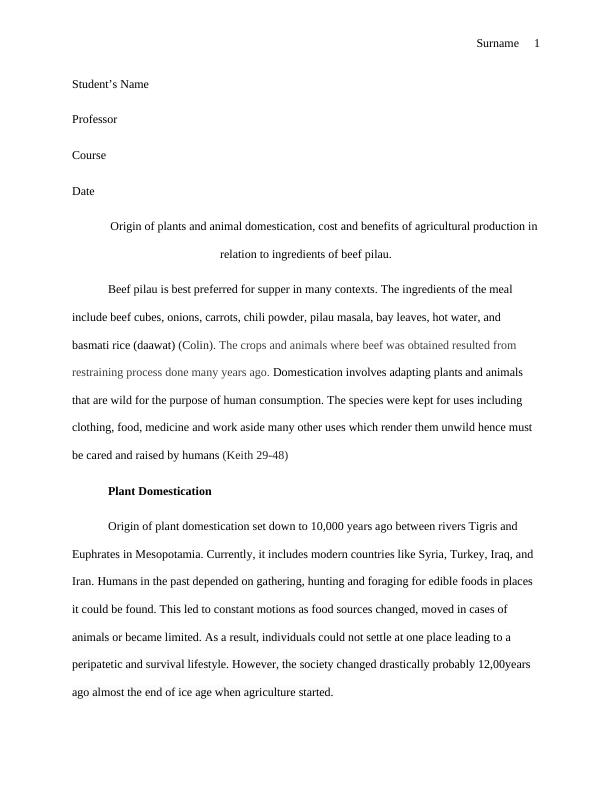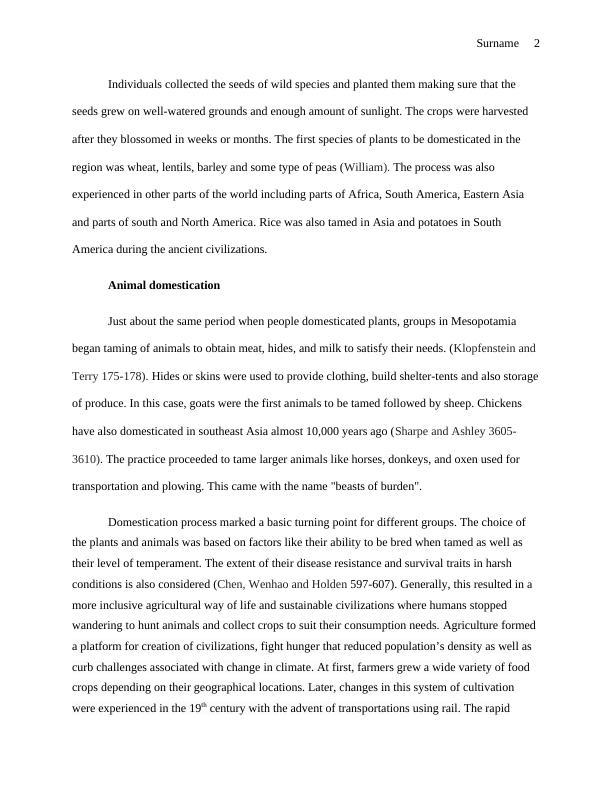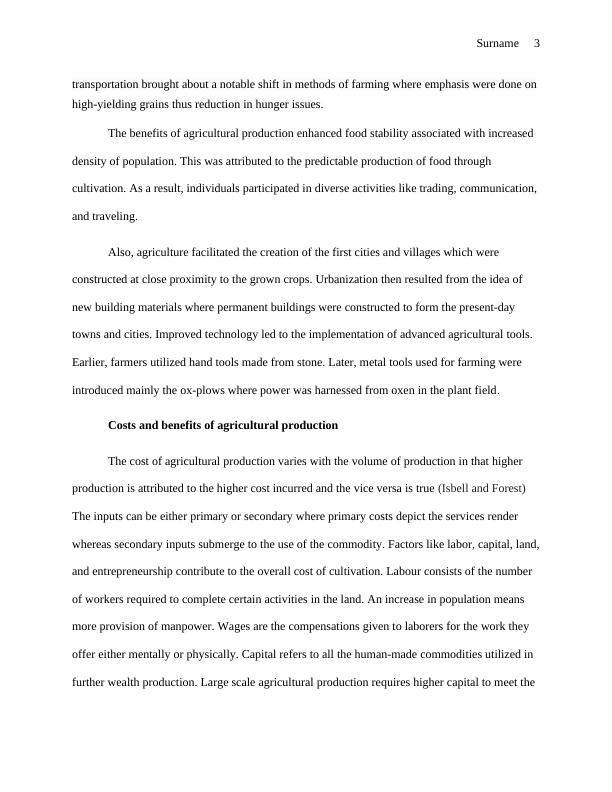Origin of plants and animal domestication, cost and benefits of agricultural production in relation to ingredients of beef pilau
Choose 1 of the following 3 essay topics to write about, in a clear, well-organized and referenced essay, between 3-5 pages long.
6 Pages1448 Words216 Views
Added on 2023-04-21
About This Document
This document explores the origin of plant and animal domestication, the cost and benefits of agricultural production, and its relation to the ingredients of beef pilau. It discusses the history of agriculture, the domestication process, and the impact of agriculture on society and the economy.
Origin of plants and animal domestication, cost and benefits of agricultural production in relation to ingredients of beef pilau
Choose 1 of the following 3 essay topics to write about, in a clear, well-organized and referenced essay, between 3-5 pages long.
Added on 2023-04-21
ShareRelated Documents
End of preview
Want to access all the pages? Upload your documents or become a member.
Domestication of Plants in Asian Countries
|8
|1705
|77
Comparing Food Production from Tilling and Pastoralism in European Regions
|7
|1577
|165
Human Interaction with Plants PDF
|12
|3899
|243



